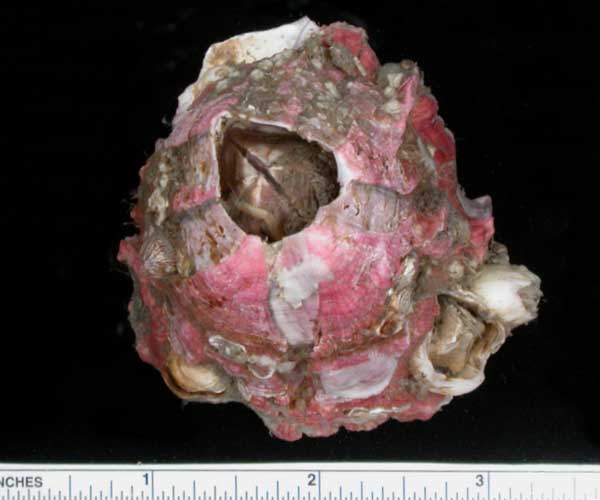What is an invasive species?
Non-native species, also referred to as nonindigenous species, are those that are found in a particular ecosystem or geographic region, but do not occur there naturally. Some are introduced as a result of human activity, either intentional or accidental. Others expand their range through natural dispersal, such as transport by wind, ocean currents, or numerous other natural transport mechanisms. Many species that are introduced by humans are of little consequence, and some may even be beneficial. For example, 98% of U.S. agricultural crops have been derived from introduced species. However, some introduced species establish persistent, reproducing populations that can have dramatic and potentially negative impacts. If the impacts caused by a nonindigenous species result in ecological damage, economic harm, or a threat to human health, the introduced species is considered to be invasive.
Why have they become such a problem?
Humans have transported plants, animals, and microbes around the world for centuries, both intentionally and accidentally. What has changed over the past two decades, however, is the frequency and speed at which these translocations are occurring, and to some degree the rate of successful establishment of those species in their new range. We now travel and move goods around the globe at an increasing pace, providing many more opportunities for species introductions. As the human population grows, we also increase the level of disturbance to the natural habitats that we occupy, and introduced species are particularly successful at colonizing these altered habitats. Global climate change presents greater opportunities for tropical and subtropical species to spread to higher latitudes. Furthermore, species evolve and ecosystems are delicately balanced, so what appears today to be a non-invasive introduction may turn out to become a serious one later on. The threat that invasive species pose to the natural biodiversity of the world ranks second only to that of habitat destruction. Yet, despite what we know about biological invasions, we still cannot predict with any degree of certainty which nonindigenous species will become invasive or what damage they might cause if they do.
How do they get here?
Species are introduced to areas outside of their natural range through many pathways. In South Carolina, the major known pathways for the entry of non-native aquatic species are fish stocking, aquarium releases, shipping transport, and release of live bait. Although largely abandoned in the 1970s, the practice of stocking game fish by wildlife agencies was widespread, and it resulted in established populations of numerous species of nonindigenous fish. Some popular species of bait fish become established after anglers release their excess supply, while other fish that are sold in the pet trade often end up being released into the wild after they grow too large for confinement in an aquarium. Some introductions are achieved through multiple pathways. Certain plants, for example, are introduced into the wild by aquarium owners, and when they proliferate they may be moved from one water body to another on boat trailers, watercraft, or even by waterfowl. Plants that are used in water gardens may propagate beyond the confines of a nursery, or they may exceed the control of the pond owner and become established in the wild. Escapement of animals from aquaculture facilities is also a source of introductions in some places, particularly where the culture facility is located near a natural water body. In coastal waters, the vast majority of introductions result from maritime activities. The release of ballast water, which is often transported a considerable distance from its source, is often the means of introduction of larval or planktonic animals and plants. Fouling organisms that grow on the hull and other exposed surfaces of vessels engaged in global trade are often the source of introductions, either by being physically dislodged from the vessel or by the release of larvae during spawning.
What nonindigenous species have been seen in South Carolina?
Although many invasive species are terrestrial, the focus of SERTC and the information here on nonindigenous and invasive organisms deals only with the aquatic ones. In South Carolina, approximately 150 non-native aquatic species have been reported (https://nas.er.usgs.gov/queries/SpeciesList.aspx); however, information about the current status of the majority of those introductions is sparse. Some have become established, while others have not been seen since they were first reported. The largest numbers of these nonindigenous species are invertebrates, although there are nearly as many fishes. Aquatic plants, including several species of marine algae, constitute the remainder.
Please see the following pages for an up-to-date listing of the scientific and common names of nonindigenous species reported in South Carolina
Aquatic Invertebrates
Fishes
Aquatic Plants
Control of invasive aquatic plants is an expensive undertaking in South Carolina.
Links to invasive species websites
Gulf & South Atlantic Regional Panel on Aquatic Invasive Species
https://www.gsarp.org/ accessed 9/28/2010
International Union for Conservation of Nature (IUCN)
Marine Menace – Alien invasive species in the marine environment
http://cmsdata.iucn.org/downloads/marine_menace_en_1.pdf accessed 9/28/2010
Invasive Species Weblog, Jennifer F. Orth, author
http://invasivespecies.blogspot.com accessed 9/28/2010
National Estuarine Research Reserve System (NERRS) – Non-native species in our nation’s estuaries: a framework for an invasion monitoring program
http://invasions.si.edu/nemesis/ accessed 9/28/2010
National Exotic Marine and Estuarine Species Information System (NEMESIS)
https://www.doi.gov/invasivespecies accessed 3/31/2015
Smithsonian Environmental Research Center, Marine Invasions Research Lab
https://serc.si.edu/labs/marine-invasions-research accessed 9/28/2010
South Carolina Aquatic Invasive Species Management Plan
http://www.dnr.sc.gov/water/envaff/aquatic/aisfiles/SCAISplan.pdf accessed 9/28/2010
South Carolina Department of Natural Resources, Aquatic Invasive Species Task Force
http://www.dnr.sc.gov/water/envaff/aquatic/ais.htm accessed 3/31/2015
South Carolina Department of Natural Resources, Aquatic Nuisance Species Program
http://www.dnr.sc.gov/invasiveweeds/index.html accessed 3/31/2015
US Coast Guard Aquatic Nuisance Species webpage
https://www.anstaskforce.gov/ballast.php accessed 3/31/2015
US Coast Guard Ballast Water Management webpage
https://nas.er.usgs.gov/ accessed 9/28/2010
US Geological Survey (USGS) Nonindigenous Aquatic Species Program
https://nas.er.usgs.gov/ accessed 3/31/2015
US Department of Agriculture, National Agricultural Library, National Invasive Species Information Center
https://www.invasivespeciesinfo.gov/ accessed 9/28/2010
Please contact SERTC staff with questions or comments regarding the
reference list. We welcome reprint contributions relevant to invertebrates
in the South Atlantic Bight, as well as general keys to world
taxa.

